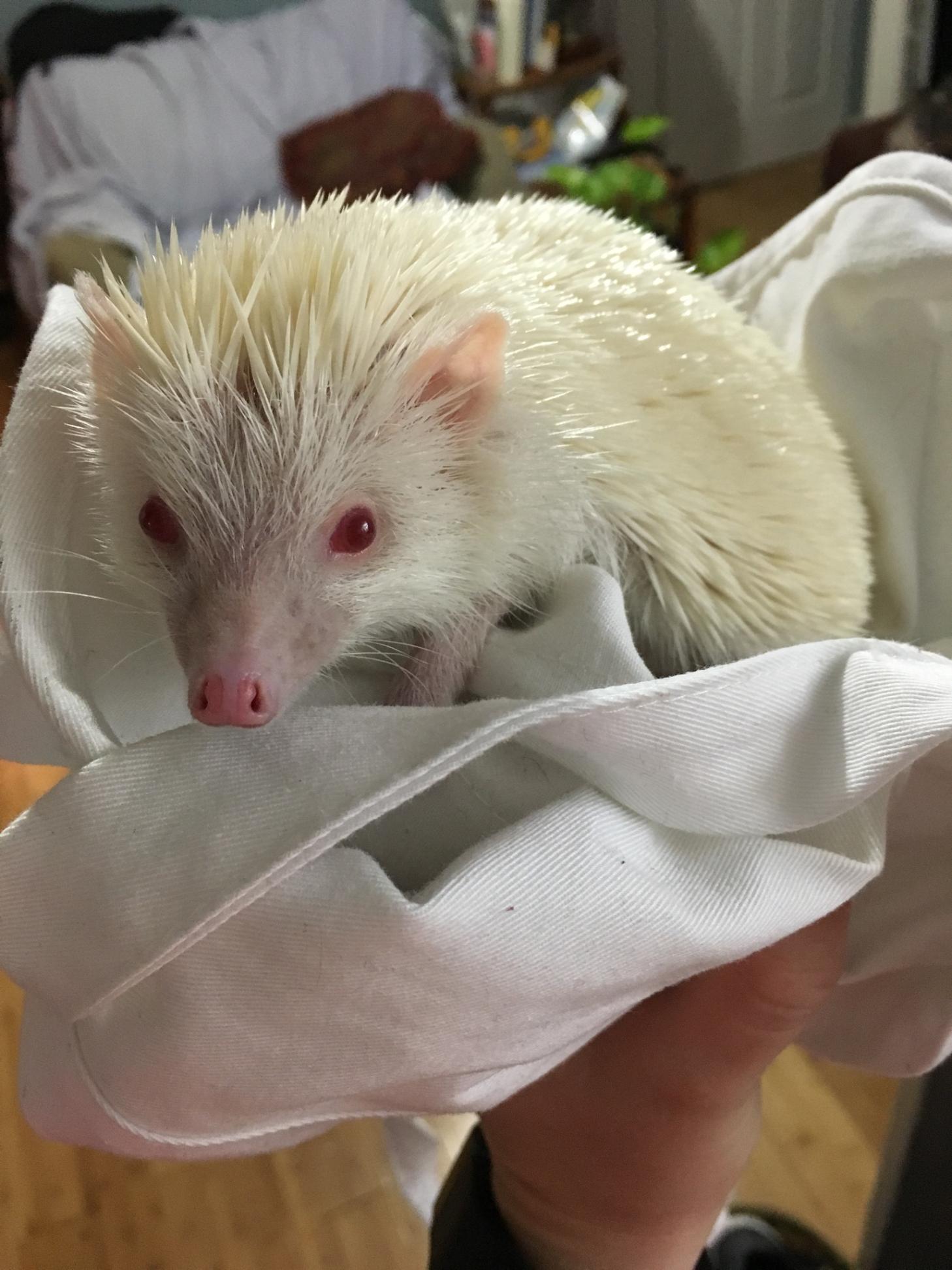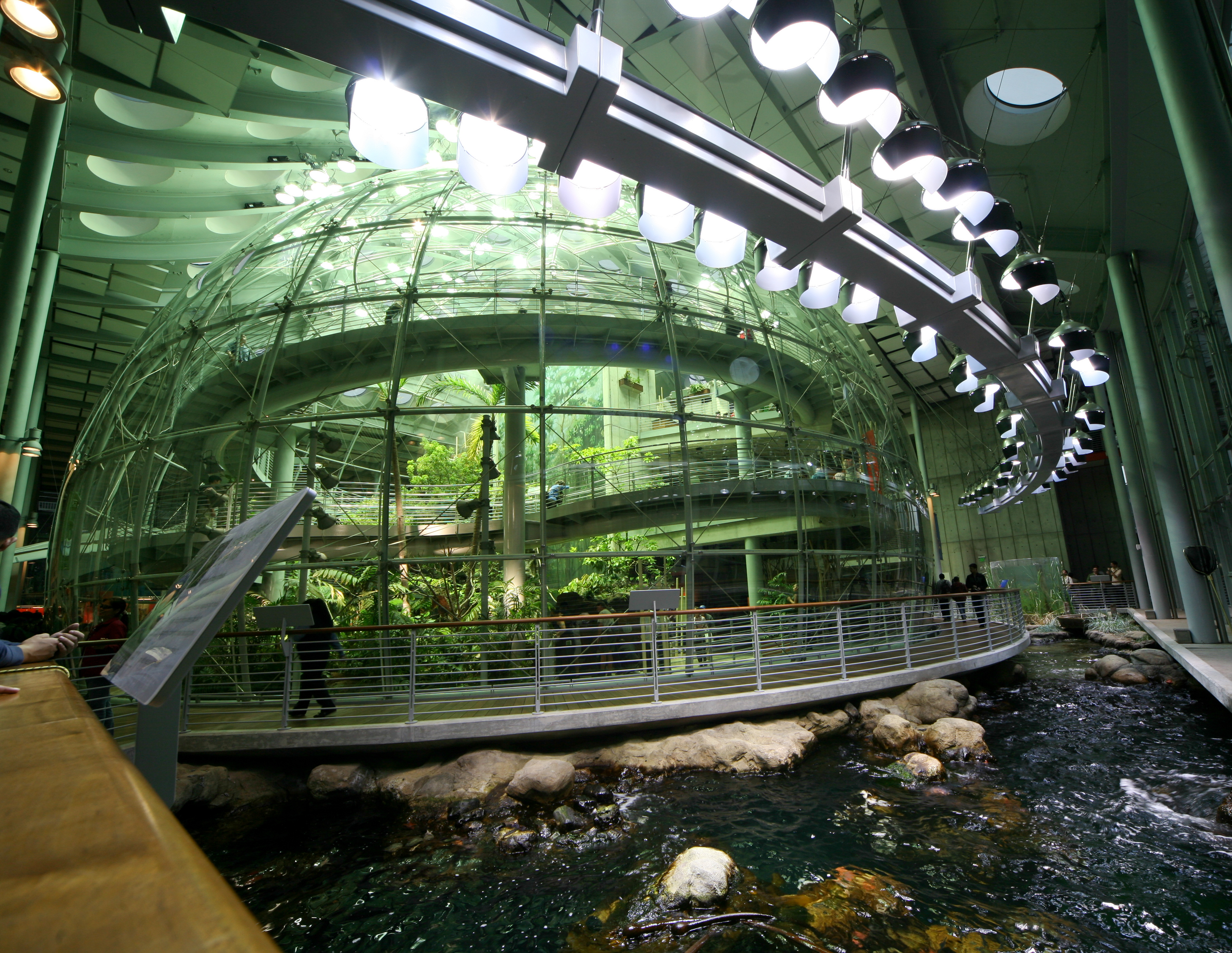|
Albinism
Albinism is the congenital absence of melanin in an animal or plant resulting in white hair, feathers, scales and skin and reddish pink or blue eyes. Individuals with the condition are referred to as albinos. Varied use and interpretation of the terms mean that written reports of albinistic animals can be difficult to verify. Albinism can reduce the survivability of an animal; for example, it has been suggested that albino alligators have an average survival span of only 24 hours due to the lack of protection from UV radiation and their lack of camouflage to avoid predators. It is a common misconception that all albino animals have characteristic pink or red eyes (resulting from the lack of pigment in the Iris (anatomy), iris allowing the blood vessels of the retina to be visible); this is not the case for some forms of albinism. Familiar albino animals include in-bred strains of laboratory animals (rats, mice and rabbits), but populations of naturally occurring albino animals ... [...More Info...] [...Related Items...] OR: [Wikipedia] [Google] [Baidu] |
Oculocutaneous Albinism
Oculocutaneous albinism is a form of Albinism in humans, albinism involving the human eye, eyes (''wikt:oculo-#Prefix, oculo-''), the human skin, skin (''-wikt:cutaneous#Adjective, cutaneous''), and the hair. Overall, an estimated 1 in 20,000 people worldwide are born with oculocutaneous albinism. OCA is caused by mutations in several genes that control the biosynthesis, synthesis of melanin within the melanocytes. Seven types of oculocutaneous albinism have been described, all caused by a disruption of melanin synthesis and all autosomal recessive disorders. Oculocutaneous albinism is also found in non-human animals. Types The following types of oculocutaneous albinism have been identified in humans. See also * Piebaldism * List of skin conditions * List of cutaneous conditions associated with increased risk of nonmelanoma skin cancer References External links Oculocutaneous albinism informationat RareDiseases.org NCBI Genetic Testing Registry {{DEFAULTSORT:Ocul ... [...More Info...] [...Related Items...] OR: [Wikipedia] [Google] [Baidu] |
Eumelanin
Melanin (; ) is a family of biomolecules organized as oligomers or polymers, which among other functions provide the pigments of many organisms. Melanin pigments are produced in a specialized group of cells known as melanocytes. There are five basic types of melanin: eumelanin, pheomelanin, neuromelanin, allomelanin and pyomelanin. Melanin is produced through a multistage chemical process known as melanogenesis, where the oxidation of the amino acid tyrosine is followed by polymerization. Pheomelanin is a cysteinated form containing poly benzothiazine portions that are largely responsible for the red or yellow tint given to some skin or hair colors. Neuromelanin is found in the brain. Research has been undertaken to investigate its efficacy in treating neurodegenerative disorders such as Parkinson's. Allomelanin and pyomelanin are two types of nitrogen-free melanin. The phenotypic color variation observed in the epidermis and hair of mammals is primarily determine ... [...More Info...] [...Related Items...] OR: [Wikipedia] [Google] [Baidu] |
Melanin
Melanin (; ) is a family of biomolecules organized as oligomers or polymers, which among other functions provide the pigments of many organisms. Melanin pigments are produced in a specialized group of cells known as melanocytes. There are five basic types of melanin: eumelanin, pheomelanin, neuromelanin, allomelanin and pyomelanin. Melanin is produced through a multistage chemical process known as melanogenesis, where the oxidation of the amino acid tyrosine is followed by polymerization. Pheomelanin is a cysteinated form containing poly benzothiazine portions that are largely responsible for the red or yellow tint given to some skin or hair colors. Neuromelanin is found in the brain. Research has been undertaken to investigate its efficacy in treating neurodegenerative disorders such as Parkinson's. Allomelanin and pyomelanin are two types of nitrogen-free melanin. The phenotypic color variation observed in the epidermis and hair of mammals is primarily determi ... [...More Info...] [...Related Items...] OR: [Wikipedia] [Google] [Baidu] |
Pheomelanin
Melanin (; ) is a family of biomolecules organized as oligomers or polymers, which among other functions provide the Biological pigment, pigments of many organisms. Melanin pigments are produced in a specialized group of cells known as melanocytes. There are five basic types of melanin: #Eumelanin, eumelanin, #Pheomelanin, pheomelanin, neuromelanin, allomelanin and pyomelanin. Melanin is produced through a multistage chemical process known as melanogenesis, where the oxidation of the amino acid tyrosine is followed by polymerization. Pheomelanin is a cysteine, cysteinated form containing polybenzothiazine portions that are largely responsible for the red or yellow tint given to some skin or hair colors. Neuromelanin is found in the brain. Research has been undertaken to investigate its efficacy in treating neurodegenerative disorders such as Parkinson's. Allomelanin and pyomelanin are two types of nitrogen-free melanin. The phenotype, phenotypic color variation observed in t ... [...More Info...] [...Related Items...] OR: [Wikipedia] [Google] [Baidu] |
California Academy Of Sciences
The California Academy of Sciences is a research institute and natural history museum in San Francisco, San Francisco, California, that is among the largest List of natural history museums, museums of natural history in the world, housing over 46 million specimens. The academy began in 1853 as a learned society and still carries out a large amount of original research. The institution is located in Golden Gate Park on the West Side (San Francisco), West Side of San Francisco. Completely rebuilt in 2008, the academy's primary building in Golden Gate Park covers . In early 2020, before the COVID-19 pandemic, the California Academy of Sciences had around 500 employees and an annual revenue of about $33 million. Governance The California Academy of Sciences, California's oldest operating museum and research institution for the natural sciences, is governed by a 41-member board of trustees who are nominated and chosen by the California Academy of Sciences Fellows. The Academy Fello ... [...More Info...] [...Related Items...] OR: [Wikipedia] [Google] [Baidu] |
Flower Pigments
A biological pigment, also known simply as a pigment or biochrome, is a substance produced by living organisms that have a color resulting from selective color absorption. Biological pigments include plant pigments and flower pigments. Many biological structures, such as skin, eyes, feathers, fur and hair contain pigments such as melanin in specialized cells called chromatophores. In some species, pigments accrue over very long periods during an individual's lifespan. Pigment color differs from structural color in that it is the same for all viewing angles, whereas structural color is the result of selective reflection or iridescence, usually because of multilayer structures. For example, butterfly wings typically contain structural color, although many butterflies have cells that contain pigment as well. Biological pigments See conjugated systems for electron bond chemistry that causes these molecules to have pigment. * Heme/ porphyrin-based: chlorophyll, bilirubin, ... [...More Info...] [...Related Items...] OR: [Wikipedia] [Google] [Baidu] |
Claude (alligator)
Claude (hatched September 15, 1995) is an albino alligator ('' Alligator mississippiensis'') at the California Academy of Sciences in San Francisco, California, United States. Claude lacks the pigment melanin, resulting in colorless skin, and he has poor eyesight associated with his albinism. Background Claude was hatched on September 15, 1995, in Florida, weighing . He was in danger in the wilderness owing to albinism, which did not allow him to camouflage into his surroundings like other alligators. He was initially raised at the St. Augustine Alligator Farm Zoological Park in Florida. Claude was taken to the California Academy of Sciences in 2008. Claude was originally housed with a non-albino female alligator named Bonnie. In January 2009, Bonnie bit one of Claude's right fingers. The finger developed an infection and needed to be amputated. Bonnie was subsequently moved back to Florida. Claude weighed and was long as of 2013. He has 76 teeth. He appears completely ... [...More Info...] [...Related Items...] OR: [Wikipedia] [Google] [Baidu] |
Mexican Cave Tetra
The Mexican tetra (''Astyanax mexicanus''), also known as the blind cave fish, blind cave characin or the blind cave tetra, is a freshwater fish in the Characidae family (tetras and relatives) of the order Characiformes. The type species of its genus, it is native to the Nearctic realm, originating in the lower Rio Grande, and the Neueces and Pecos Rivers in Texas, into the Central Plateau and eastern states of Mexico. Maturing at a total length of about , the Mexican tetra is of typical characin form, albeit with silvery, unremarkable scalation, likely an evolutionary adaptation to its natural environment. By comparison, the species' blind "cave" form has scales which evolved a pale, pinkish-white color, somewhat resembling an albino, as it inhabits pitch-black caverns and subterranean streams and has no need for a colorful appearance (i.e. for attracting mates). Likewise, the blind cave tetra has fully "devolved" (lost) the use of its eyes by living in an environment comp ... [...More Info...] [...Related Items...] OR: [Wikipedia] [Google] [Baidu] |
Feathers
Feathers are epidermis (zoology), epidermal growths that form a distinctive outer covering, or plumage, on both Bird, avian (bird) and some non-avian dinosaurs and other archosaurs. They are the most complex integumentary structures found in vertebrates and an example of a complex evolutionary novelty. They are among the characteristics that distinguish the extant Aves, birds from other living groups. Although feathers cover most of the bird's body, they arise only from certain well-defined tracts on the skin. They aid in flight, thermal insulation, and waterproofing. In addition, coloration helps in communication and crypsis, protection. The study of feathers is called plumology (or plumage science). People use feathers in many ways that are practical, cultural, and religious. Feathers are both soft and excellent at trapping heat; thus, they are sometimes used in high-class bedding, especially pillows, blankets, and mattresses. They are also used as filling for winter clothi ... [...More Info...] [...Related Items...] OR: [Wikipedia] [Google] [Baidu] |




